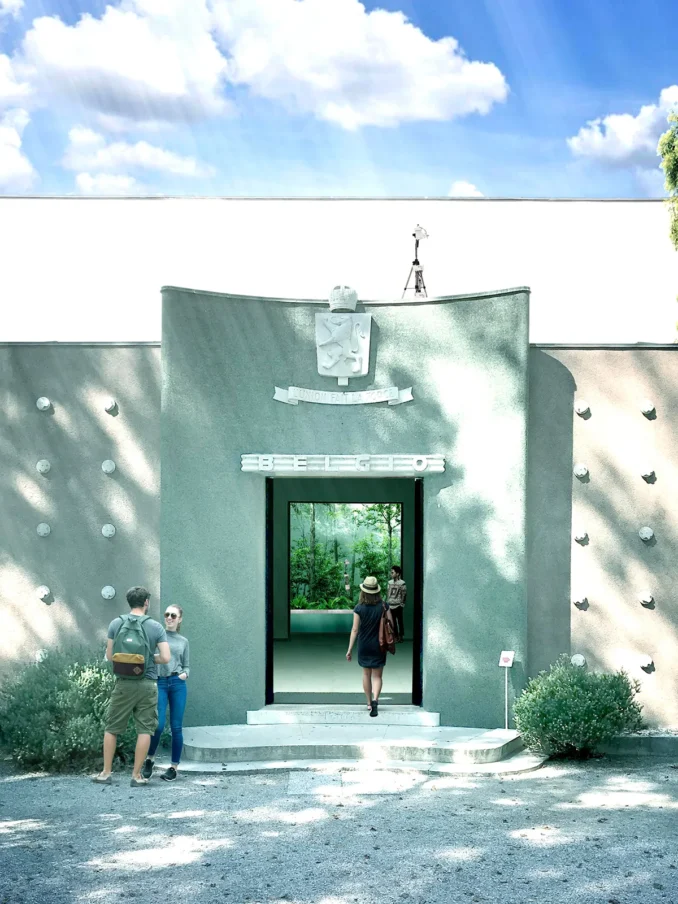
The climate crisis questions the relationship between architecture and nature. In the exhibition Building Biospheres landscape architect Bas Smets and neurobiologist Stefano Mancuso investigate how the natural intelligence of plants can be used to produce an indoor climate. During six months, the Belgian pavilion will serve as a prototype for this innovative research.
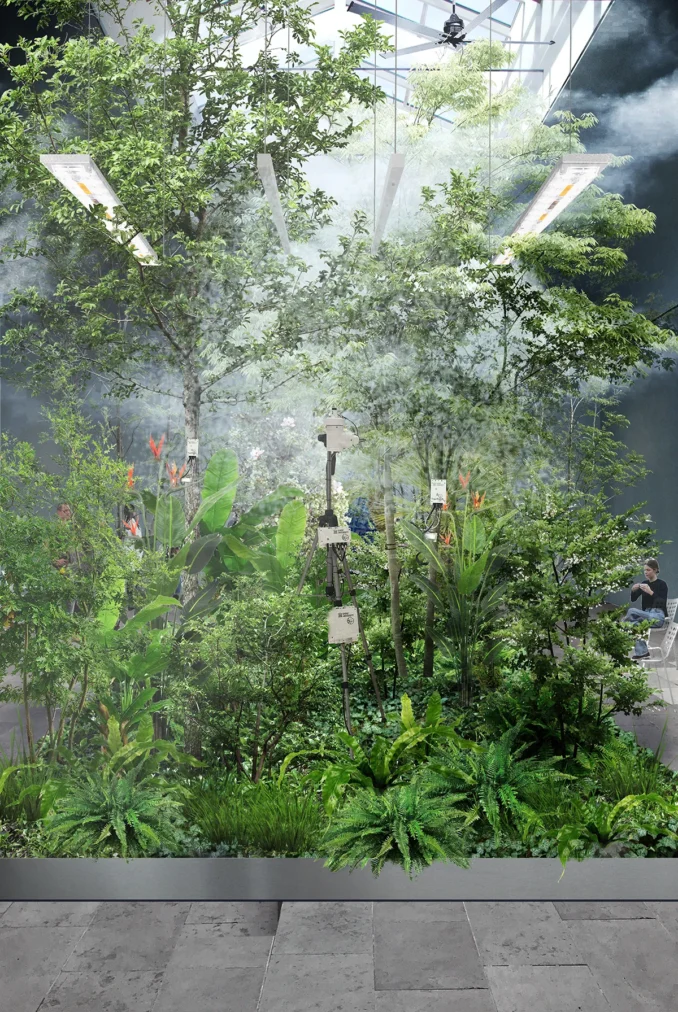
Plant Intelligence
Every four years since 2004, the Flanders Architecture Institute (VAi) has produced an exhibition in the Belgian pavilion. It has coordinated, alternately with the French Community of Belgium, the Belgian contribution. This year, the theme ‘Plant Intelligence’ takes centre stage. On the initiative of the Flemish Government and commissioned by the Flanders Architecture Institute, the team of Bas Smets and Stefano Mancuso will present Building Biospheres in the Belgian pavilion. The exhibition shows the ongoing research on the possible impact of plant intelligence on architecture, and more specifically on the indoor climate.
‘For too long, landscape has served as a backdrop for architecture. If we are to build a future that is truly sustainable, then natural intelligence must become the leading agent, shaping the way we live together. We have to design with our biosphere, not against it.’
– Dennis Pohl, director Flanders Architecture Institute, commissioner Building Biospheres
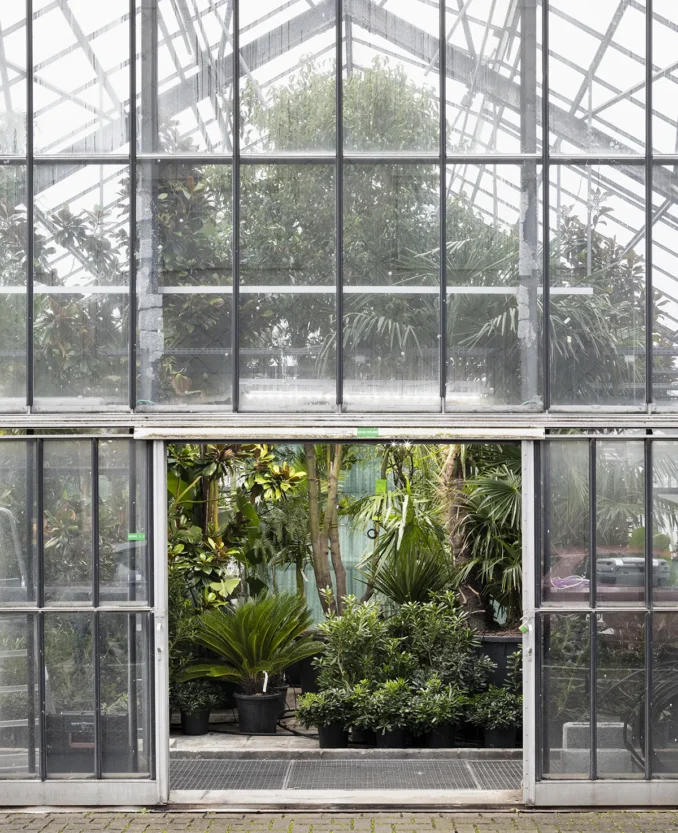
Building Biospheres
Throughout time, we have built shelters to protect ourselves from the weather’s unpredictability: temperature swings, wind, rain and snow. What began as rudimentary protection evolved into highly controlled microclimates, separating the indoor from the outdoor conditions. Today, most buildings have a completely artificial climate that responds to the needs of their users.
In nature, the desired climate for humans is most closely approximated in the subtropics, characterized by warm summers, mild winters and an almost constant temperature. Based on plants from this climate zone, Building Biospheres envisions a future where buildings evolve into dynamic biospheres. Plant behaviour is monitored with precision and the harvested data is used to activate irrigation, lighting and ventilation. This produces a new symbiosis between what the plants need, what the building can handle and what people desire.
Prototype
In the run-up to the Biennale Architettura 2025 in Venice, the team of Bas Smets, together with plant ecophysiologist Kathy Steppe of Ghent University and software developer Dirk De Pauw of Plant AnalytiX, worked from October 2024 to March 2025 on a prototype of the installation for the Belgian pavilion. Working in a greenhouse on Campus Coupure, they experimented with innovative climate control for buildings.
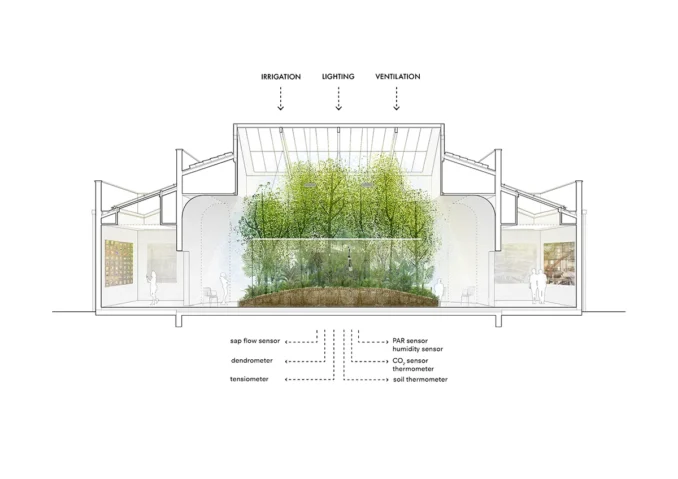
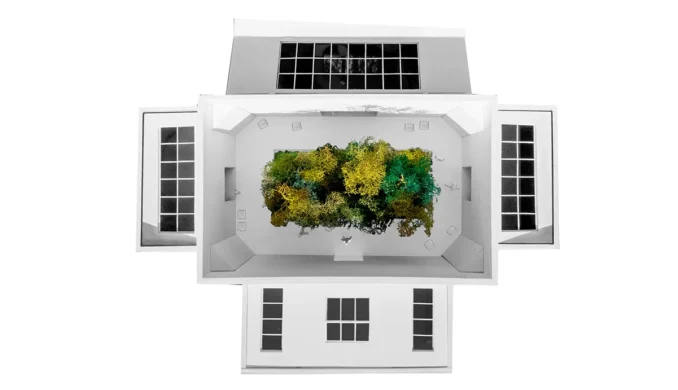
The Belgian Pavilion as a Laboratory
Being the oldest national pavilion in the Giardini (1907), the Belgian pavilion consists of a large central hall with side rooms. The installation consists of more than 200 plants and occupies the central area beneath the skylight. The pavilion’s front rooms provide the project with historical context. The room at the back of the pavilion visualizes real-time data on the prototype’s performance. In the two side rooms, a new generation of Belgian architects explore what this natural intelligence can mean for architecture.
‘The prototype in Venice allows us to test the possibility for plants to actively produce and control a building’s indoor climate. This makes us hope for an architecture as a microclimate where plants and humans can live together.’
– Bas Smets, curator Building Biospheres
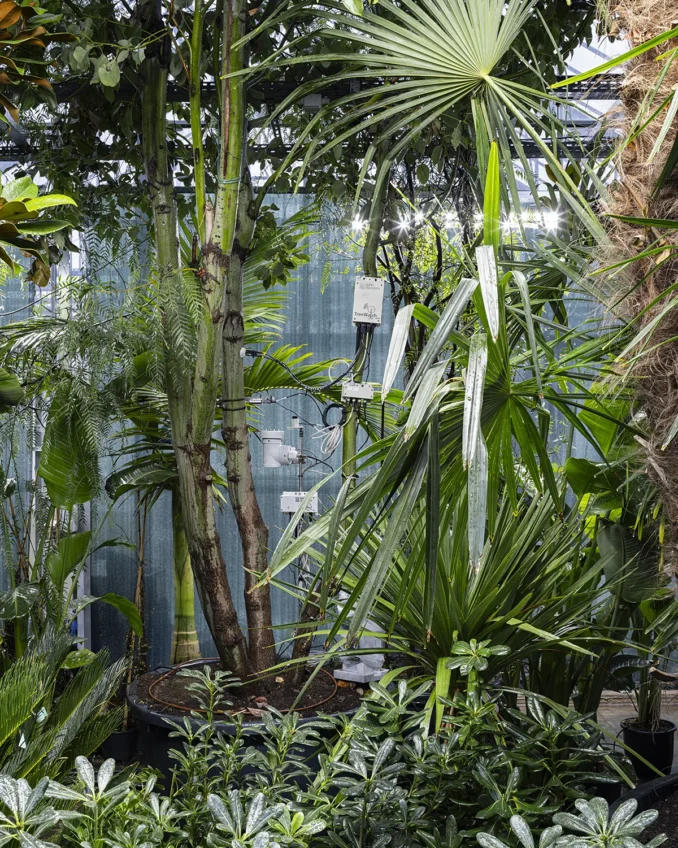
Invited Architects on Building Biospheres
Four young teams are developing new architecture in which natural intelligence plays the leading role. The architects will investigate the spatial impact of the prototype that curators Bas Smets and Stefano Mancuso are presenting in the Belgian pavilion. The designers will work intensively with the curators, coordinated by Lisa De Visscher (freelance architectural consultant) and Petrus Kemme (Flanders Architecture Institute). The design teams are:
- Elmēs
- Maud Gerard Goossens and Henri Uijtterhaegen
- Panta
- Lisa Mandelartz Schenk and Steven Schenk
Catalogue
The exhibition Building Biospheres is accompanied by the catalogue of the same name, edited by Bas Smets, Bart Decroos and Dennis Pohl. With contributions by Stefano Mancuso, Bart Decroos, Véronique Patteeuw, Kathelin Gray, Lydia Kallipoliti, Daniel Barber, Kathy Steppe & Dirk De Pauw, Erik De Waele, Lisa De Visscher & Petrus Kemme, Bas Smets, Dennis Pohl.
The Biennale Architettura 2025 and the exhibition Building Biospheres in the Belgian pavilion will run from 10 May until 23 November 2025.
Images Credit: Bureau Bas Smets (unless otherwise captioned)
